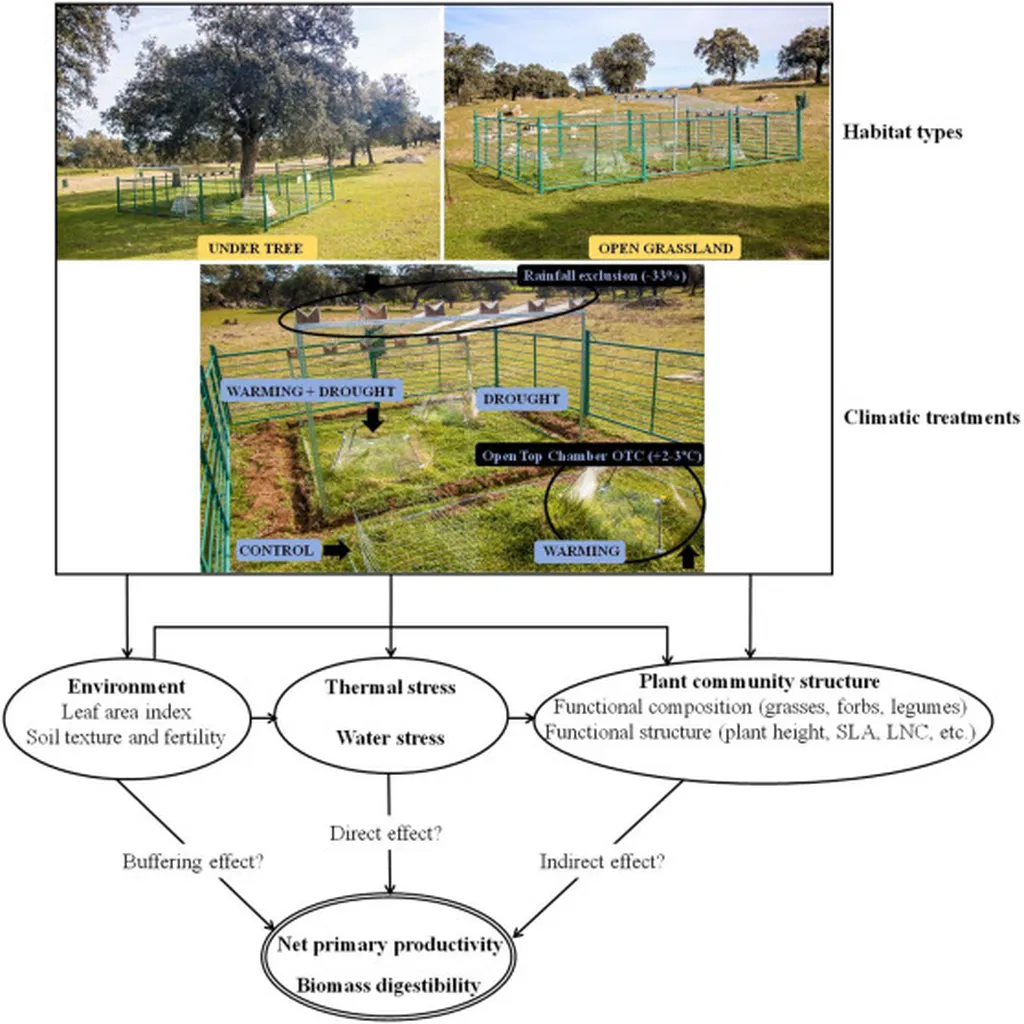In the heart of Australia’s temperate grazing lands, a silent battle is unfolding. As climate change tightens its grip, extreme heat events threaten the productivity of agricultural systems, sending ripples of uncertainty through the energy sector that relies on these systems for bioenergy and carbon sequestration. But what if the solution to this looming crisis lies in the very trees that dot the landscape?
A recent study published in the Journal of Sustainable Agriculture and Environment, which translates to “Journal of Sustainable Farming and Environment,” explores this very idea. Led by Abigail Addo-Danso from the School of Environmental and Rural Science at the University of New England in Armidale, New South Wales, the research delves into how tree density and spatial configuration influence the resilience of pasture species to extreme heat.
The study, titled “Paddock Tree Arrangement and Pasture Photosynthetic Heat Tolerance in a Temperate Tree‐Pasture Grazing System Under Climate Change Scenarios,” is a beacon of hope for the energy sector, which is increasingly looking towards agricultural systems for sustainable energy solutions. The research team examined how different tree arrangements affect the leaf nitrogen content, specific leaf area, and photosynthetic heat tolerance (Tcrit) of dominant pasture species.
“While leaf nitrogen varied with tree spatial configuration, Tcrit and TSMs remained largely conserved,” Addo-Danso explains. This means that while the nutritional content of the leaves changed with the arrangement of trees, the pastures’ ability to withstand heat remained largely unchanged. This is a crucial finding, as it suggests that the physiological capacity for heat tolerance adjustment in pasture species is limited, even with the presence of trees.
The study also projected future thermal safety margins (TSMs) under two climate emission scenarios—the best-case scenario (SSP1‐2.6) and the worst-case scenario (SSP5‐8.5) using 28 earth system models. The results were sobering. Projected warming substantially reduced TSMs, indicating that even with the best-case scenario, the thermal safety margins of pasture species are likely to decrease.
So, what does this mean for the energy sector? As the world grapples with the realities of climate change, the energy sector is increasingly looking towards agricultural systems for sustainable energy solutions. However, the findings of this study suggest that integrating trees into grazing/pasture systems may not be enough to buffer the impacts of climate change on pasture species.
“This highlights the constrained role of tree cover in buffering climate impacts on pasture species and the need for broader adaptation strategies in agricultural systems,” Addo-Danso states. This means that while trees can provide some level of resilience, they are not a silver bullet. The energy sector must look towards broader adaptation strategies to ensure the resilience of agricultural systems in the face of climate change.
The study is a wake-up call for the energy sector, emphasizing the need for innovative solutions to mitigate the impacts of climate change on agricultural systems. As the world grapples with the realities of climate change, the energy sector must look towards broader adaptation strategies to ensure the resilience of agricultural systems. The findings of this study are a crucial step in this direction, providing valuable insights into the role of tree cover in buffering climate impacts on pasture species.
In the face of climate change, the energy sector must look towards broader adaptation strategies to ensure the resilience of agricultural systems. The findings of this study are a crucial step in this direction, providing valuable insights into the role of tree cover in buffering climate impacts on pasture species. As the world grapples with the realities of climate change, the energy sector must look towards broader adaptation strategies to ensure the resilience of agricultural systems. The findings of this study are a crucial step in this direction, providing valuable insights into the role of tree cover in buffering climate impacts on pasture species.

